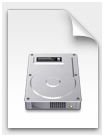DMG files use Hierarchical File System (HFS) as a disk file system format. In order for your Linux machine to open DMG files it needs to support HFS and HFS+. To enable HFS and HFS+ support on your Linux machine you will need to install HFS tools and kernel modules.
- Jul 27, 2017 $ dmg2img Mac OS X Install DVD.dmg 1.img dmg2img v1.6.5 (c) vu1tur (to@vu1tur.eu.org) Mac OS X Install DVD.dmg - 1.img decompressing: opening partition 0. 100.00% ok opening partition 1. 100.00% ok opening partition 2. 100.00% ok opening partition 3. 100.00% ok opening partition 4.
- Apr 20, 2010 Introduction. DMG2IMG is an Apple's compressed dmg to standard (hfsplus) image disk file convert tool. It is derived from dmg2iso v0.2c by vu1tur. It will allow you to convert a DMG file into an IMG file that can be mounted as described in ManageDiscImages.
This guide covers the verbatim copying of a DMG image to a USB thumb drive using only Linux (no need to find a Mac). If the DMG was intended to be bootable then the resulting USB will be bootable.

Convert to ISO
Linux doesn’t much care for DMG files. Sure, it’ll play nice with them. But we don’t just want to play nice. We want to copy a DMG image to a USB drive and keep it as verbatim as computationally possible. In order to do this, we’re first going to convert the image to a format that’s a little more universal: ISO.
We’re going to use dmg2img to convert the DMG to an ISO image. If you already have dmg2img, great. If not, install it using your distribution’s native package management system.
On Ubuntu, you’d do it like this:
Once you have dmg2img installed, begin converting the DMG file:
After a few minutes, you should have a second file called image.img. This file can be used like an ISO. All we have to do is change the extension. Use mv to do this:
Linux Open Dmg File
Make sure you specified “image.img” and not “image.dmg”! Working with three different file extensions can get kind of confusing.
Ok, so we should now have a file called “image.iso” which is just “image.img” with a different extension.
Now we want to write “image.iso” to our USB drive. I used “lsblk” to figure out how the system was identifying my drive. The lsblk command lists all disks connected to the system. It’s usually pretty easy to figure out which disk is which based on their size. Just be sure you’re sure. This process is going to overwrite the target disk with the contents of our DMG image file. Any preexisting files on the target disk will be lost. As usual, make sure you have a proper backup.
Make sure the target drive isn’t mounted. Unmount the drive with your distribution’s GUI.

Or you could just unmount it from the terminal:
Most systems seem to mount external drives in /media. Sometimes the drive might be mounted in /mnt or elsewhere.
Write the ISO image to the USB drive like this:
Replace “X” with the appropriate letter. For example “/dev/sdb”. Be sure to use the drive directly and not a partition within the drive. For example, don’t use “/dev/sdb1”.
Linux Dmg File
This will probably take a little while to complete. I’m using a Kingston DataTraveler DTSE9 and it took about 24 minutes 30 seconds to write 4.9GB.
Install Dmg File On Ubuntu Pc
Your new USB stick should now be bootable, assuming that was the intended purpose of the DMG.
Comments are closed.